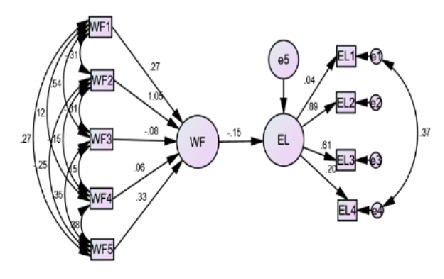


Indian Journal of Science and Technology
Year: 2023, Volume: 16, Issue: 14, Pages: 1056-1061
Original Article
Prathika Shetty1, Sindu Bharath2, P Nagesh3*
1Research Scholar, JSS Centre for Management Studies, JSS Science and Technology University, Mysore, 570 006, India
2Associate Professor, JSS Centre for Management Studies, JSS Science and Technology University,, Mysore, 570 006, India
3Professor, JSS Centre for Management Studies, JSS Science and Technology University, Mysore, 570 006, India
*Coreesponding Author
Email: [email protected]
Received Date:25 January 2023, Accepted Date:11 March 2023, Published Date:12 April 2023
Objectives: To examine the nexus between workforce agility (WFA) and Employee Loyalty(EL). Methods: Present investigation uses a quantitative approach to examine relationship amid considered variables. The structured questionnaire was adopted to elicit the needed information to achieve stated objectives. The instrument consists of 3 sections, demographic factors, Workforce agility (WFA) and Employee Loyalty (EL). The data were collected through e-mail survey from employees of Information Technology (IT) organisations located in Bengaluru city, India. 410 valid responses were considered for data analysis. The present research adopts Theory of Work Adjustment (TWA) as basis to fulfil the stated objective. The field testing is done with 72 respondents. Convenience sampling technique was adopted. Designed Likert instrument was validated with the help of an Exploratory Factor Analysis (EFA) and established the items by Confirmatory Factor Analysis (CFA) and confirmed by fit indexes. The Structural Equation Model (SEM) is employed to know the relationship amid considered variables. WFA is studied by adopting the 32-item scale (reliability ranges from 0.814 to 0.874). EL is studied by adopting the 18 item scale (reliability ranges from 0.823 to 0.842). Findings: With reference to WFA, CFA confirmed extracted 5 factors with 20 items (item loading ranges from 0.63 to 0.81). Thus, indicating data appropriateness. Items were grouped and labelled as Adaptive, Collaborative, Job Clarity, Proactive and Progressive. With reference to EL, CFA confirmed extracted 4 factors with 18 items (item loading ranges from 0.68 to 0.85). Thus, indicating data appropriateness. Items were grouped and labelled as Commitment, Reward and Recognition, Co-worker Relationship and Career Prospects. The SEM demonstrate the negative relationship amid WFA and EL which indicates that higher the WFA lesser the EL. Novelty: The present research attempts to integrate the contemporary behavioural construct of Workforce Agility vis-à-vis Employee Loyalty. The WFA and EL features associated with IT organizations are presented in solitary manner advancing the theoretical and empirical knowledge. The outcome helps the ner advancing the theoretical and empirical knowledge. The outcome helps the HR practitioners to design HR strategies to retain the agile employees to exhibit loyalty.
Keywords: Workforce Agility; Employee Loyalty; Information Technology; Structural Equation Model; Theory of Work Adjustment
© 2023 Shetty et al. This is an open-access article distributed under the terms of the Creative Commons Attribution License, which permits unrestricted use, distribution, and reproduction in any medium, provided the original author and source are credited. Published By Indian Society for Education and Environment (iSee)
Subscribe now for latest articles and news.